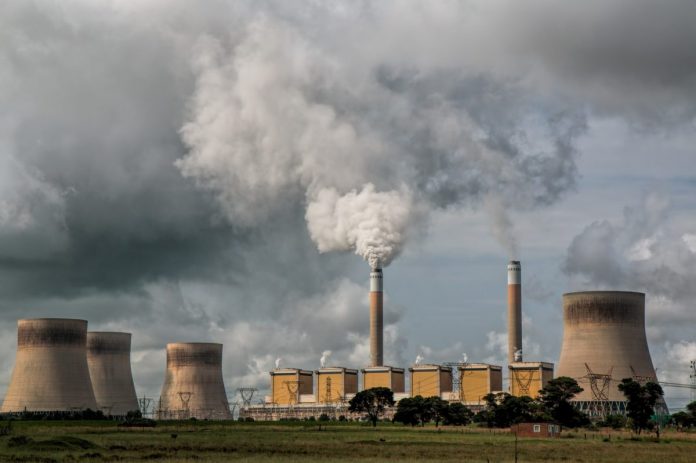Despite the steady flow of reports about new solar projects, there are still hundreds of gigawatts of coal capacity in the global pipeline. Throughout the world, energy companies and governments are now planning 499 GW of coal-fired capacity, including projects that have been announced and permitted, as well as plants that are now under construction.
Increasingly cheap renewables are outcompeting coal-fired power stations, according to a new report by the Carbon Tracker Initiative. The independent financial think tank says that $638 billion of investments in new coal assets could be lost if the projects are actually built, because they will struggle to compete on cost with renewables.
It reached this harsh conclusion by comparing the levelized cost of energy (LCOE) for renewable assets with the long-run marginal cost (LRMC) of coal-fired units. The LRMC includes the cost of operating a thermal power station, which includes fuel, transportation, installation and acquisition costs, as well as O&M services.
Inflection points
Two economic inflection points are critical to understanding the relative competitiveness of coal power:
- When renewable energy is cheaper than energy generated by new investments in coal
- When renewable energy is cheaper than generating electricity using existing coal assets
The team used GCPEM, a proprietary techno-economic simulation model that tracks ~95% of operating, under-construction, and announced or pre-permitted coal facilities. The figures show that the first inflection point has already occurred in all major markets in the world. The second inflection point will have occurred in all major markets by 2030.
In 2018, the Carbon Tracker Initiative published Powering Down Coal: Navigating the economic and financial risks in the last years of coal power. The authors sourced data on LCOE and the cost of renewables and concluded that by 2025, coal generation will become uneconomic in absolute and relative terms. Now, the think tank is saying that its assumptions were too conservative and that the energy market has already reached that point.
The second inflection point – the year when the LCOE of renewables outcompetes the LRMC of coal – is where existing coal assets will start to become economically obsolete. According to Carbon Tracker, 60% of the global coal power fleet has already reached this point, with the trend being most pronounced in the European Union.
A confluence of comparatively high carbon prices and years of more substantial investments in renewable assets have enabled this economic development in Europe. However, the United States, China, and India are not far behind Europe due to their excellent renewable energy resources, low capital costs, and low-cost policymaking.
| Country or region | Under-construction (MW) | Announced, permited and pre-permitted | Capital cost ($/mn) |
| China | 99,710 | 106,176 | 158,338 |
| ASEAN | 22,883 | 55,011 | 123,930 |
| India | 36,698 | 29,327 | 79,850 |
| Turkey | 1,465 | 31,715 | 64,032 |
| Japan | 9,269 | 2,612 | 31,020 |
| EU | 4,890 | 2,700 | 16,074 |
| United States | – | – | – |
| Other | 24,657 | 71,978 | 164,818 |
| Total | 199,572 | 299,519 | 638,062 |
By 2030, more than 90% of the coal capacity in Europe will cost more to operate than it will cost to install new wind and solar projects. China will rank second in that metric, when 70% of power stations will become uneconomical. This is followed by Australia, India, and the United States – all ranging around 50%. Japan and the Asia-Pacific region, meanwhile, will see less than 10% of its coal power fleet losing its competitive edge to wind and solar.
Market design
The reason for these different developments can be found in market design. “We broadly categorize power markets in two ways: deregulated and regulated,” the Carbon Tracker Initiative said. “Deregulated markets are subject to a competitive wholesale power market where generation activities are completely separated from the rest of the value chain. Regulated markets are not subject to the competitive wholesale power market where generation activities are integrated into the rest of the value chain under the ownership of a vertically integrated utility.”
Due to this division into different market types, the team found that in deregulated markets, the economics of coal are directly affected by renewable-energy price developments. This is the case in the European Union, where the economics of coal will become obsolete first. Meanwhile, in semi-regulated markets such as the United States, a drive for corporate welfare will result in high coal costs being passed over to a captive consumer base.
Lastly, there are semi-regulated and regulated markets, like in the Asia-Pacific region, where coal generation is heavily subsidized or connected to intractable political problems. That in turn can drive the price of coal power below its own production costs. In such an environment, wind and solar will struggle to win the upper hand.
Looking further ahead, the analysts noted that in China – where 205 GW of additional coal power assets are currently under construction or in development – policymakers could help the national economy by putting more transparent pricing structures and energy-planning regimes in place. Investment in the country’s planned coal fleet stands at $158 billion, but Carbon Tracker estimates that 70% of its existing coal fleet currently runs at a loss.
Carbon Tracker believes that policymakers need to adopt a firm stance on phasing out coal to signal a clear path forward. “We have already seen the first inflection point for coal, but as long as governments continue to subsidize coal assets, investors will keep placing their money in fossil fuels,” the authors write.






